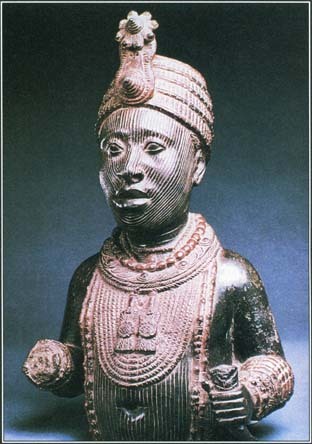There were two broad categories of the age-grades in every Uneme community. This categorization was applicable to the male age-grades as it was to the females. The first main category comprised the senior sets and the second, the junior. With particular reference to the senior age-grades category, oral traditions collected recently have shown that each of the grades comprised no fewer than three age-sets. The names given to them varied, although their structures, compositions and functions were generally similar in nature, for instance the senior male age-sets. they are known in some sub groups of the Uneme, especially by the people of Uneme Aki-Osu as follows,
- the Edion-Iviuru
- the Edion-Ezigele
- the Edion-Useniughere
Similarly among the sub-group now called the Uneme Erhurun, the senior male-age-sets were referred to as
- the Edion-Ukpokpo
- the Edion-Evauru
- the Edion-Ezigele
In the case of those now called Uneme Nekhua, the three senior male age-sets under review are known as
- the Edion-Iviuru
- the Edion-Ezigele
- the Edion-Useniughere
Concerning the sub group now known as Uneme Oghomeze or Imiava, the three senior male age-sets being discussed continue to be referred to as
- the Ogobor
- the Oberua
- the Ukhiodeh
The above names adopted by the Uneme Oghomeze or Imiava people were similar to those adopted by their neighbours now known as the Uneme Udochi or Uzosi for each of their three sets of the senior male age-grades. There had, however, existed some slight differences between these two inter-related Uneme communities on this subject, especially at the level of the junior sets of their age-grades. One of such differences was the title-names of the leaders of each of the junior sets of their age-grades. This difference will be discussed in the appropriate sub section of this chapter.
Unlike in Uneme Udochi (Uzosi), however, in the community now known as Uneme Uzanu, the three senior male age-sets are refered
as
- the Oberua
- the Okhiode
- the Ogobor
In most of the Uneme communities, the oldest person in the most senior age grade set is referred to as Odio-Uneme, i.e the oldest Uneme person. His approval is required for all traditional activities.
Generally, those who who belonged to the following age sets Edion-Ivuru, Oberua, and the Ogobor were regarded as the most senior members of the senior age-grades of the Uneme. Their ages were put at fifty years and above. But one major exception amongst others, was the case of the members of the Edion-Ukpokpo in Uneme Erhurun, whose ages were fixed at seventy years and above.
It was indeed, the members of this age-set and those of the Edion-Ivuru that were entitled to wear the highly valued red caps in most Uneme villages and clans.
For the other age grades, these approximate ages may however not be very accurate for the members of the various age grades in Uneme Nekhua as a result of the difference in the selection process. two examples of these are the Edion-Ezigele and the Edion-Useniughere. Concerning the Edion-Ezigele age-sets especially those that emerged in the communities now known as the Uneme-Erhunun, Uneme Aki-Osu, and Uneme Nekhua,. during the period, the members are generally, not above fifty years.
In respect of Edion-Usenighere, however, especially those which came into being in Uneme Aki-Osu and Uneme Nekhua, during the period, members were generally between fifteen and twenty years. Below them, were the junior male age-sets. At the lowest rung of the ladder, were children of ages between six and seven. Like all the other age-sets in both the junior and senior categories, and of both sexes, members of this children age set, did perform certain rituals and rites connected with the Irhuamhi or the age-grade ceremonies. However, these ceremonies were organised in phases. Among the Uneme Erhunun community, for example, the first phase of the ceremonies was and is still known as the Osokhulun.
Osokhulun is the process of initiation of all male children between 6 and 7 into Uneme culture. This initiation is mandatory for every Uneme male born into the culture. The Osokhulun title gives an Uneme male an identity that transcends this present world. The Ezigelee age-grade and title taking ceremonies marked the second phase of the boys ascent into manhood in an Uneme community
Unlike in Erhunun, in some other Uneme communities, the process of transformation, to the senior male age-set, exceeded two ceremonial phases. In Uneme Nekhua, for example, no fewer than four of such junior age-sets were established and had to be compulsorily passed through, with the relevant rites , rituals and ceremonies performed. These junior male-age sets are;
- the Ainigenoya
- the Umareghe
- the Okharunmba
- the Umairogamhe
It is necessary to note that these junior age sets, like their counterparts in all the Uneme communities, were utilised by the elders and the title holders of the most senior grades for executing communal assignments. Because of their teenage nature and youthful endowment, the members were very active and energetic. thus, they represented the cream of the leadership of the future leadership of every Uneme.
As earlier noted, just as the male Uneme people had adapted to and developed both the junior and senior sets of their age grades, so did the women. Besides just as each of the various male categories of both the junior and senior age grades had different sets, so also the women. Moreveover the names by which these age grades were known varied from community to community. However it is possible to give three notable examples as follows;
- the Odion-Ikposo
- the Ikposo-Edion
- Igbidegwa
The Odion-Ikposo was the oldest woman in each of the villages and clan. She was usually selected from the apex age-set and titled society of every Uneme community. She was therefore the oldest surviving member of both her age set and titled society in each of the component Uneme communities.





